Plecos are a popular species of catfish that are commonly kept in aquariums due to their unique appearance and ability to help keep tanks clean.
However, many owners struggle with determining the best diet to feed their plecos. Understanding the nutritional needs of plecos and the types of foods they should be fed is crucial to keeping them healthy and happy.
Plecos are primarily herbivores, meaning their diet should consist mainly of vegetables and plant matter. While some species of plecos may consume meaty foods in the wild, they should not be the main component of their diet in captivity.
Supplementing with meaty foods can be beneficial, but it should not make up more than 10% of their overall diet.
In addition to providing a balanced diet, feeding techniques and schedule should also be considered to ensure plecos are receiving the proper nutrients they need.
Contents
Key Takeaways on What to Feed Plecos
- Plecos are primarily herbivores and should have a diet consisting mainly of vegetables and plant matter.
- Supplementing with meaty foods can be beneficial, but it should not make up more than 10% of their overall diet.
- Feeding techniques and schedule should also be considered to ensure plecos are receiving the proper nutrients they need.
Check out these other related posts:
Understanding Plecos
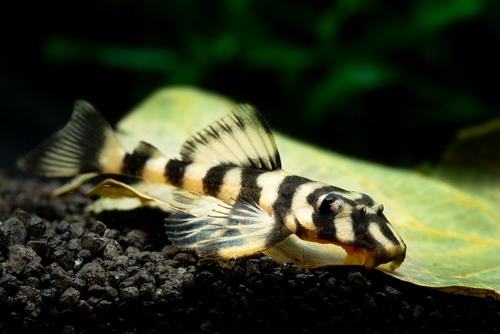
Plecos, also known as pleco catfish, are a popular freshwater fish among aquarium enthusiasts. There are many different species of plecos, but some of the most common include the common pleco, clown pleco, and bristlenose pleco.
One of the most notable features of plecos is their unique appearance. They have a flattened body shape and are covered in bony plates that protect them from predators.
They also have a sucker-like mouth that they use to attach themselves to surfaces, which makes them excellent algae eaters.
In terms of behavior, plecos are typically nocturnal and territorial. They are known to be quite active at night, and will often hide during the day. They can also be quite aggressive towards other fish, especially if they feel like their territory is being threatened.
When it comes to color, plecos can vary widely depending on the species. Some are quite plain, while others have striking patterns and colors.
Plecos in the Aquarium
Plecos are popular aquarium fish that are known for their ability to keep tanks clean by eating algae. They are also called algae eaters or scavengers. Plecos are a great addition to any aquarium ecosystem, but they require specific care and feeding to thrive.
When setting up an aquarium for plecos, it is important to provide plenty of hiding spots and surfaces for them to graze on. Driftwood is an excellent addition to any pleco tank, as it provides both hiding spots and a surface for plecos to scrape algae off of.
In addition to driftwood, live plants such as Java fern can also be added to the tank. Not only do they provide hiding spots and surfaces for plecos, but they also help to oxygenate the water and create a more natural environment for the fish.
When it comes to feeding plecos, it is important to remember that they are primarily herbivores.
While they will eat some meat-based foods, their diet should consist mainly of vegetables and algae. Some common foods for plecos include:
- Algae wafers
- Zucchini
- Cucumber
- Spinach
- Kale
It is important to avoid feeding plecos too much protein, as this can lead to health problems. It is also important to avoid overfeeding, as plecos are prone to obesity.
In addition to providing a balanced diet, it is important to keep the tank clean and well-maintained.
Brown algae can be a problem in pleco tanks, but it can be controlled by maintaining good water quality and providing plenty of surfaces for the plecos to graze on.
Nutritional Needs of Plecos
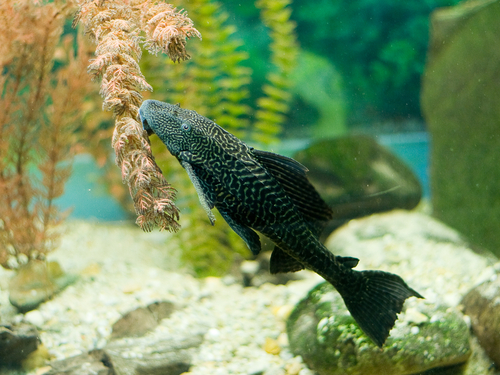
Plecos are known for their ability to eat almost anything, but that doesn’t mean they can survive on just any food. To keep your plecos healthy and happy, it’s important to understand their nutritional needs.
1. Protein
Protein is essential for the growth and development of plecos. They require a diet that is high in protein, with a minimum of 40% protein in their food. Good sources of protein for plecos include algae wafers, shrimp, and krill.
2. Fiber
Fiber is important for the digestive system of plecos. They need a diet that is high in fiber, with a minimum of 25% fiber in their food. Good sources of fiber for plecos include vegetables like zucchini and cucumber, as well as algae wafers.
3. Vitamins
Plecos require a variety of vitamins to maintain a healthy immune system. They need a diet that is high in vitamins, especially vitamin C. Good sources of vitamin C for plecos include fresh fruits and vegetables like oranges and broccoli.
4. Digestion
Plecos have a unique digestive system that requires a diet that is easy to digest. They need a diet that is low in fat and high in fiber to keep their digestive system healthy. Good sources of food for plecos include algae wafers and fresh vegetables.
5. Herbivores
Plecos are primarily herbivores, but they also require some animal protein in their diet. A good diet for plecos should consist of a mix of vegetables and protein sources like shrimp or krill.
The Herbivorous Diet of Plecos
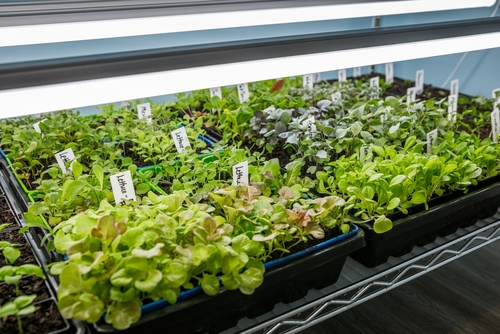
Plecos are herbivorous fish that require a diet rich in plant material to maintain their health and vitality. Their natural diet consists mainly of algae, but they also enjoy a variety of fresh vegetables.
To ensure that your herbivorous pleco is getting the right nutrients, it’s important to offer a variety of foods.
Some of the best vegetables to feed your pleco include zucchini, lettuce, peas, broccoli, romaine, lima beans, kale, celery, carrot, cabbage, spinach, sweet potato, and brussel sprouts.
These vegetables can be blanched or boiled to soften them and make them easier for your pleco to digest. In addition to vegetables, plecos also enjoy fruit. Some good options include apples, pears, and melons.
However, it’s important to note that fruit should be offered in moderation, as it contains a higher sugar content than vegetables.
While fresh vegetables are an important part of a pleco’s diet, it’s also important to provide them with specialized food designed for herbivorous fish.
Algae wafers and tablets are a great option, as they are specifically formulated to meet the nutritional needs of plecos.
Supplementing with Meaty Foods
Plecos are primarily herbivorous, but they do require some meaty foods to supplement their diet.
Meaty foods are a good source of protein, which is essential for growth and maintenance of the fish’s body. Here are some meaty foods that can be fed to plecos:
- Shrimp: Plecos love shrimp, and it is a good source of protein. Shrimp can be fed raw or cooked, but it is important to remove the shell and tail before feeding it to the fish.
- Bloodworms: Freeze-dried bloodworms are a popular food for plecos. They are high in protein and can be fed as a treat or as a supplement to the fish’s regular diet.
- Worms: Earthworms and other types of worms can be fed to plecos. They are a good source of protein and can be fed raw or cooked.
- Meat: Small amounts of cooked meat can be fed to plecos. Beef, chicken, and turkey are good options. It is important to remove any bones and fat before feeding it to the fish.
It is important to note that meaty foods should only be fed to plecos as a supplement to their regular diet. Overfeeding meaty foods can lead to health problems such as constipation and obesity.
It is recommended to feed meaty foods to plecos no more than once or twice a week.
Feeding Techniques and Schedule
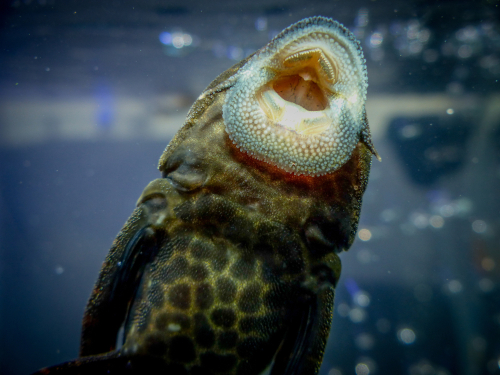
Feeding plecos can be a bit tricky, as these fish have unique dietary requirements. It is important to provide them with a balanced diet that includes both plant and meat-based foods.
Here are some feeding techniques and schedules to help keep your plecos healthy and happy.
1. Feeding Schedule
Plecos should be fed once or twice a day, depending on their age and size. Younger plecos may need to be fed more frequently, while adult plecos can be fed less often.
It is important not to overfeed your plecos, as this can lead to health problems.
2. Fish Feeding
Plecos are primarily herbivores and require a diet that is high in plant-based foods. Some good options include algae wafers, spirulina flakes, and fresh vegetables such as zucchini and cucumber.
It is also important to supplement their diet with meat-based foods, such as brine shrimp or bloodworms.
3. Spoon and Fork
When feeding your plecos, it is important to use the right tools. A spoon or fork can be used to place food directly in front of your plecos, making it easier for them to find and eat.
This can also help prevent food from getting stuck in the substrate or filter.
4. Leftovers
It is important to remove any uneaten food from the tank after feeding. Leftover food can quickly decompose and pollute the water, leading to health problems for your plecos and other fish in the tank.
Why Plecos Need Varied Diet
As complex as they are, Plecos require various dietary needs to keep them functioning optimally. Taking proper care of your pleco involves understanding and providing the right nutritional requirements, which come through a varied Plecos diet. So here we look at the of varied diet for Plecos.
1. It Encourages Balanced Health
Offering a diverse range of food items guarantees that plecos obtain a wide range of vital nutrients, vitamins, and minerals. A diversified diet helps prevent vitamin deficits and supports general health since different foods have varying nutritional compositions. In a sense, commercially produced Pleco foods have all the nutrients in the right amounts for fish to be fed; therefore, store-bought pet food made especially for your pleco will satisfy all of its nutritional needs.
The anatomy of the Plecos is tailored to where they live, following certain types of food so as to help them feed on various foods and grow. The more varied food Plecos eat the more vibrant and active
2. It Mimics Their Natural Environment
Plecos eat a wide range of food in the wild, and it is only good that you replicate these eating patterns for the ones in captivity. These food choices may include algae, plant matter, and small invertebrates.

Offering your plecos a wide range of food choices will help give them a stimulating and thriving environment, even in captivity, and contribute to their well-being and growth
3. Fights Against Dietary Deficiencies
One food source diets have a likelihood of causing significant nutritional shortfalls in pleco fish. This could lead to a variety of health problems and, in the worst cases, even early death.
These fish’s immune systems are greatly aided by the amounts of vitamins and amino acids in their food. As such, inadequate consumption of these essential minerals can impair their immune system, making them more vulnerable to illnesses and potentially fatal disorders. More so, deficiency in some minerals affects not only their growth and development but also the general quality of the water in the aquarium.
For this reason, providing a varied diet is not only vital but also a major requirement for the health and well-being of pleco fish. By offering a range of nutritional profiles via different diets, you can more effectively protect your cherished Plecos pets, promoting their health and offering them a more rewarding environment that is disease-free.
Plecos require a varied and well-balanced diet to thrive. Failure to address nutritional requirements and dietary imbalances may have unfavorable consequences. It is vital to adhere to thoughtful and varied feeding practices.
Specific Pleco Foods
There are many different types of food that plecos can eat, but some are more beneficial than others. Here are some specific pleco foods that are recommended:
1. Hikari Tropical Algae Wafers
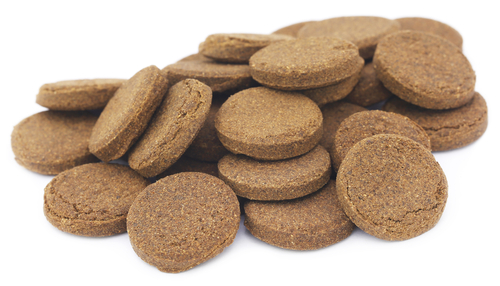
Hikari Tropical Algae Wafers are a popular choice for feeding plecos. They are made from high-quality ingredients and are specifically designed to meet the nutritional needs of algae-eating fish like plecos.
These wafers are rich in spirulina and other algae, which are important sources of protein and other nutrients for plecos.
2. Omega One Veggie Rounds
Omega One Veggie Rounds are another good option for feeding plecos. These sinking pellets are made from a blend of fresh vegetables and kelp, which provide a balanced and nutritious diet for plecos.
They are also fortified with vitamins and minerals, which help to support overall health and well-being.
3. Pleco Food
There are many different types of pleco food available, including flakes, pellets, and wafers. These foods are specifically designed to meet the nutritional needs of plecos and are formulated to provide a balanced and complete diet.
When choosing pleco food, it is important to look for a high-quality product that contains a variety of ingredients, including algae, vegetables, and other sources of protein.
4. Snails
Snails are a natural food source for plecos and can be a good addition to their diet. They are high in protein and other nutrients, which help to support growth and overall health.
Some species of snails, like ramshorn snails, are particularly good for plecos because they are soft and easy to digest.
5. Tablets
Tablets are another popular option for feeding plecos. These sinking pellets are designed to release slowly, which allows plecos to graze on them throughout the day.
They are typically made from a blend of algae, vegetables, and other sources of protein, which provide a balanced and nutritious diet for plecos.
6. Goldfish
While goldfish are not a recommended food source for plecos, some plecos will eat them if given the opportunity.
However, it is important to note that goldfish are not a natural food source for plecos and can cause health problems if fed too frequently. It is best to stick to foods that are specifically designed for plecos to ensure that they are getting the nutrients they need to thrive.
Age and Size Considerations
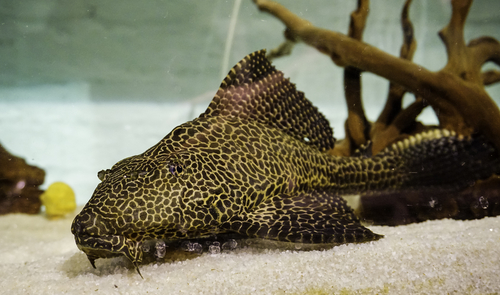
When it comes to feeding plecos, age and size are important considerations to keep in mind. Different plecos have varying dietary needs depending on their size and age.
For young plecos, it is important to provide them with a diet that is high in protein. This will help them grow and develop properly. Some good options for young plecos include bloodworms, brine shrimp, and sinking pellets.
As plecos mature and grow larger, their dietary needs change. Larger plecos require more fiber in their diet to aid in digestion.
Vegetables like zucchini, cucumbers, and leafy greens can be added to their diet to meet this need. Additionally, larger plecos may benefit from occasional feedings of algae wafers or spirulina flakes.
It is important to note that overfeeding can be a problem for plecos of any age or size. Plecos have a slow metabolism and can quickly become overweight if they are fed too much.
It is recommended that plecos are fed once a day and that any uneaten food is removed from the tank after a few hours.
For beginner pleco owners, it is important to do research on the specific species of pleco they own to ensure that they are providing the appropriate diet.
Additionally, it is recommended that they consult with a veterinarian or experienced pleco owner to ensure that they are meeting all of their pleco’s dietary needs.
Unique Pleco Species
There are many unique pleco species that require special attention when it comes to feeding. Here are a few examples:
1. Clown Plecos
Clown plecos are a popular species that require a varied diet. They are known to be picky eaters and may not eat certain types of food.
It is recommended to feed them a mixture of algae wafers, sinking pellets, and fresh vegetables such as cucumber and zucchini.
2. Bristlenose Plecos
Bristlenose plecos are another popular species that require a varied diet. They are known to eat algae, but it is important to supplement their diet with sinking pellets and fresh vegetables such as spinach and kale.
3. Peckoltia
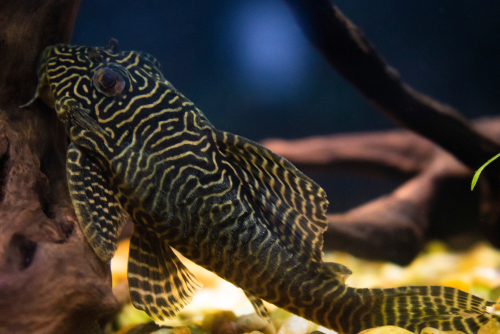
Peckoltia is a genus of plecos that are known for their unique patterns and colors. They require a varied diet that includes algae wafers, sinking pellets, and fresh vegetables such as cucumber and zucchini.
4. Ancistrus
Ancistrus is a genus of plecos that are known for their bristles and unique patterns. They require a varied diet that includes algae wafers, sinking pellets, and fresh vegetables such as spinach and kale.
Frequently Asked Questions
What are some good vegetable options for feeding plecos?
Plecos are herbivores, and their diet should consist mainly of vegetables. Some good vegetable options for feeding plecos include zucchini, cucumber, kale, spinach, and lettuce.
It is important to blanch or boil the vegetables before feeding them to the plecos to make them easier to digest.
Can plecos eat homemade food, and if so, what are some good recipes?
Yes, plecos can eat homemade food. Some good recipes for homemade pleco food include a mixture of vegetables like zucchini, cucumber, and spinach, along with some protein like shrimp or fish.
It is important to ensure that the food is well-balanced and provides all the necessary nutrients for the plecos.
What types of food are best for plecos?
The best types of food for plecos are vegetables, algae, and sinking pellets. It is important to provide a variety of food to ensure that the plecos are getting all the necessary nutrients.
Do plecos eat uneaten food in aquariums?
Yes, plecos will eat uneaten food in aquariums. However, it is important to not rely on this as their only source of food, as it may not provide all the necessary nutrients for their diet.
What is the role of driftwood in a pleco’s diet?
Driftwood is an important part of a pleco’s diet as it provides roughage that helps with digestion. It also helps to mimic their natural environment and provides a place for them to hide.
Can plecos eat fruit, and if so, what are some good options?
Yes, plecos can eat fruit, but it should be given in moderation. Some good fruit options for plecos include watermelon, cantaloupe, and honeydew. It is important to remove any seeds or pits before feeding the fruit to the plecos.

Ian Sterling, founder of Fishlab.com, began his aquarium journey over 30 years ago, driven by a deep fascination for fish and their diverse personalities. His website, Fishlab.com, is dedicated to making fishkeeping accessible and enjoyable, offering beginner-friendly guidance, expert insights, and a community for aquarists to connect and share experiences.


